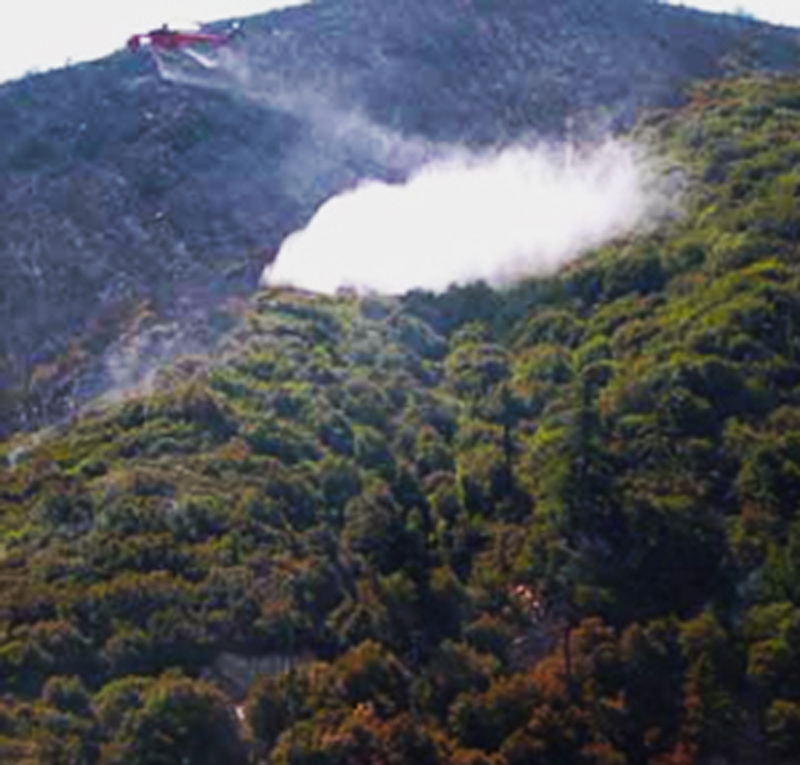
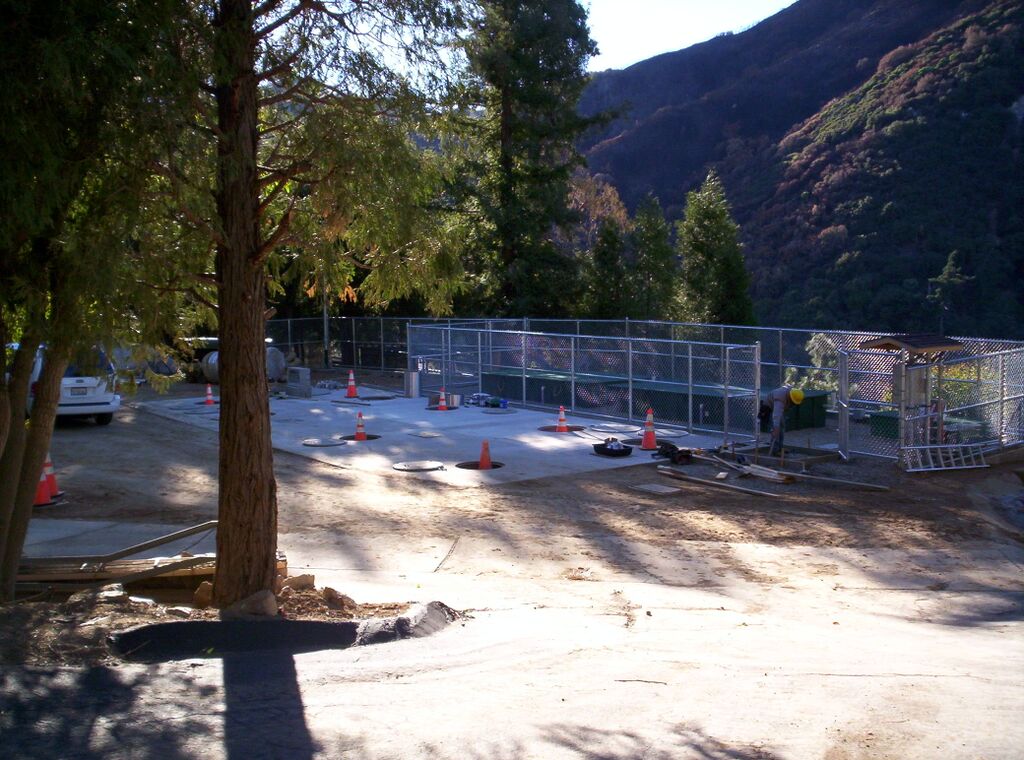
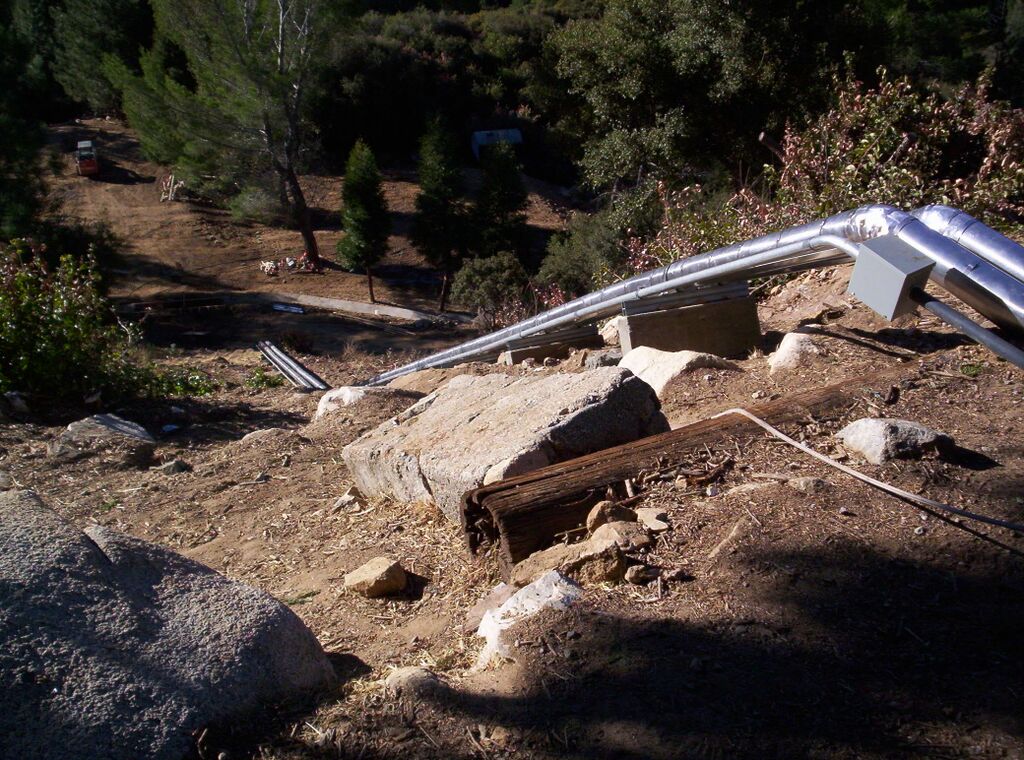
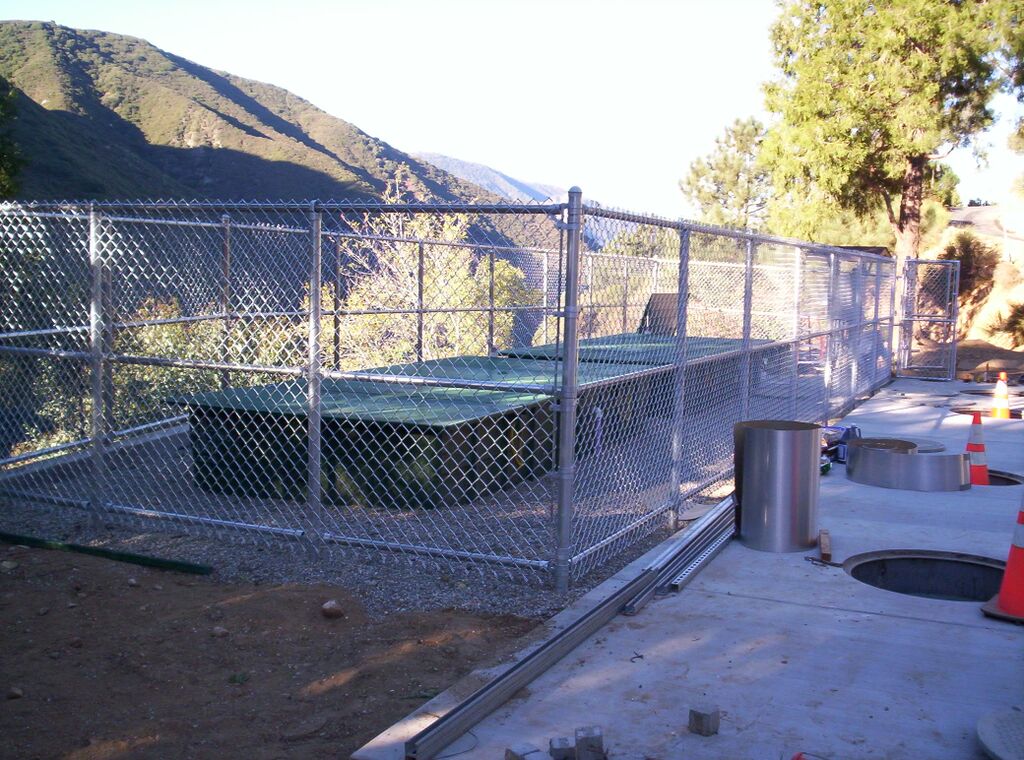
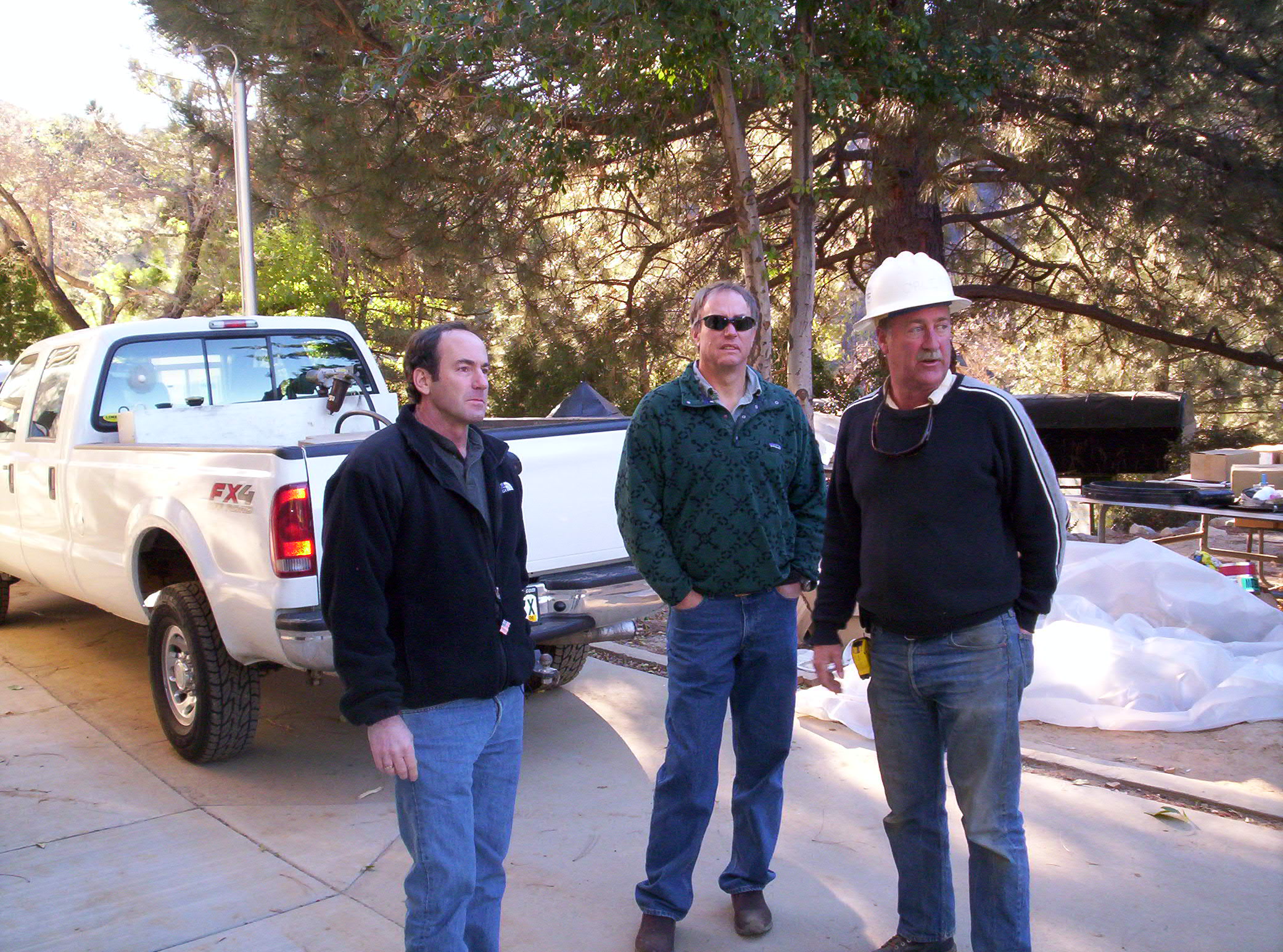
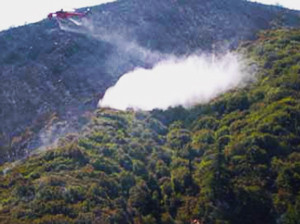
LOCATION: La Cañada, CA
DESCRIPTION: Wastewater renovation which involved: the installation of an advanced treatment system; replacement of over 1,000 ft of existing collection lines; 7 new STEP systems (1,000 to 11,000 gallon tanks); and 10,000 sq ft drip dispersal system.
The staff at Clear Creek, along with Maintenance & Operations, are very proud of this project, but even more, they enjoyed the experience of working with Integrated Water Services, especially the professionalism displayed by their crew.
IWS recently completed construction of a $1.3mm onsite wastewater system upgrade at the Clear Creek Outdoor Education Center, located in the Angeles National Forest in La Cañada for the Los Angeles Unified School District (LAUSD), the State of California’s largest school district. The facility was established in 1925, and is the oldest, continuously operated outdoor school in the United States. Clear Creek offers environmental education programs to students in the LAUSD.
Competitive Price Offering
IWS competed against five other firms in a public bid and won the project with a low bid that saved the district over $1.1mm from the next highest bidder. In all, the bids ranged from $2.4 mm to $5mm. Peter Balas, COO says “We were able to provide a very competitive price to the client because we self perform all of our work and have developed efficiencies and expertise based on our exclusive focus on these onsite water and wastewater systems. Even though our cost was much lower then our competitors, the project economics worked out very well for us and our shareholders”.
Team Approach
The project success was due in large part to the team work of all stakeholders which included: LAUSD – John Fernandez (Project Manager) and Dan Crawford (Construction Manager); Civil Engineers – Davwd Khiaban and Norman Patel of Jones/Khiaban Engineers, Inc.; Wastewater Design Engineer – Kevin Poffenbarger of EPD Consultants, Inc.; Dale Hemstad, Construction Manager for IWS; and Equipment Supplier – Steve Braband of BioSolutions, Inc. The construction of the system was completed in six months, but the overall project permitting, design, and regulatory approval was a five year process.
Upgrade Required
Prior to the upgrade, the facility was utilizing conventional septic tanks for treatment with dispersal in seepage pits and traditional leach fields. The project was considered an Emergency Repair and the system was no longer in compliance with the Los Angeles County regulations. The camp operates year round and provides service for up to 200 students per session.
During the project, much to our dismay, were we alerted by the CDF that we needed to prepare to evacuate the area due to a forest fire heading our way. Thirty-five action packed minutes later we were off the site. It was fortunate that the trees were cut back to allow for better access to the site along the entrance road for our equipment because CDF put 200 plus firemen and a dozen firetrucks throughout the facility in less than 30 minutes and was able to save the camp from the firestorm. John Fernandez, the LAUSD Project Manager, said of the project, “The staff at Clear Creek, along with Maintenance & Operations, are very proud of this project, but even more, they enjoyed the experience of working with Integrated Water Services, especially the professionalism displayed by their crew.”
New System Configuration
Renovation of the wastewater system involved: the installation of an advanced treatment system; replacement of over a thousand feet of existing collection lines; seven new fiberglass tanks ranging from 1,500 gallons to 11,000 gallons; and a 10,000 ft2 drip dispersal system.
The existing collection system piping was replaced with new lines connecting a combination of new tanks and existing tanks, in a STEP collection configuration. Effluent was then either gravity flowed or pumped to the treatment system. The following tanks were installed as part of the STEP collection system: 1,000, 1,500, 5,000, and 11,000 gallon Xerxes fiberglass tanks. IWS installed new collection lines in areas that had existing utilities and other obstructions (rocks), which complicated the installation. Blasting was ruled out due to the proximity to existing structures, so jack hammers and a backhoe outfitted with a breaker bar were used to get through the rocks that couldn’t be removed.
The treatment system selected was the Orenco Advantex AX-100 unit, which is a textile filter based technology for treating the effluent from the STEP collection system. Two AX-100’s were required to accommodate the facility loading. Once the effluent was treated by the Advantex system, it passed through a UV disinfection system to meet the regulatory requirements.
The effluent was dispersed in a 10,000 ft2 drip dispersal field which was composed of 5 separate zones. Geoflow was the supplier of the drip dispersal system. Installation of the drip dispersal field required the removal of some existing structures, large trees, boulders, and other debris. From a design perspective, the drip dispersal field was approximately 100’ lower in elevation then the treatment system, which required the installation of pressure reducing valves to regulate the flow to the field and to maintain adequate pressure for the return line back up the hill to the treatment system. The supply line from the treatment system to the dispersal field required an insulated cover and special design features because it was above grade and ran down a steep grade.
Site Challenges
Access – The project site presented many challenges to the design and construction of the system. The site is remote and located in the Angeles National Forest which is a 12 mile ride off of Highway 210 up a winding and relatively steep grade. Once at the entrance to the camp it is a 1 mile drive down a tree and rock lined, winding, and narrow road (one lane in many places). To enable access for the heavy equipment, fiberglass tanks, and equipment LAUSD trimmed trees along the road as required to enable access – which turned out to be quite fortuitous.
Subsurface conditions – The hard bedrock and subsurface conditions required alternatives to convertional seepage pit or leachfield dispersal. As discussed earlier, the pipeline and tank installation required extra effort to make it work in the rocky environment. Many areas required hand digging due to access limitations of equipment.
Grade elevation change – There were a number of challenging hydraulic design issues that need to be addressed due to differential in elevation between drip dispersal field and treatment system (100 vertical feet). In general, the site was located on a downward sloping grade.
Wildlife – The natural environment presented an opportunity to experience all of natures beauty which included rattlesnackes (we caught three of them), scorpions, black widows, bobcats (wanted nothing to do with us) and deer.
Fire Danger – The area we were working in was a fire prone region in an isolated canyon in the Los Angeles National Forest. IWS had to take extra precautions to reduce the potential of any fire, spark, or activity that might cause ignition of the dry groundcover. All IWS personnel were trained in fire response activities in the event of a fire. Half way through the project, much to our dismay, were we alerted by the CDF that we needed to prepare to evacuate the area due to a forest fire heading our way. Thirty-five action packed minutes later we were off the site. It was fortunate that the trees were cut back to allow for better access to the site along the entrance road for our equipment because CDF put 200 plus firemen and a dozen firetrucks throughout the facility in less than 30 minutes and was able to save the camp from the firestorm.
John Fernandez, the LAUSD Project Manager, said of the project, “The staff at Clear Creek, along with Maintenance & Operations, are very proud of this project, but even more, they enjoyed the experience of working with Integrated Water Services, especially the professionalism displayed by their crew.”
For more information, please click the ‘Contact’ tab to reach out to us.
